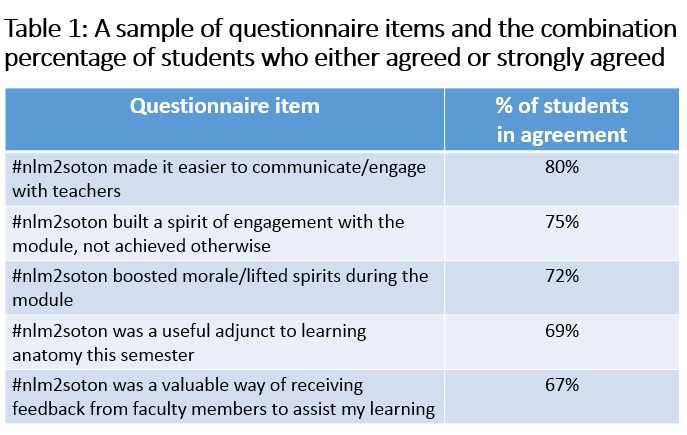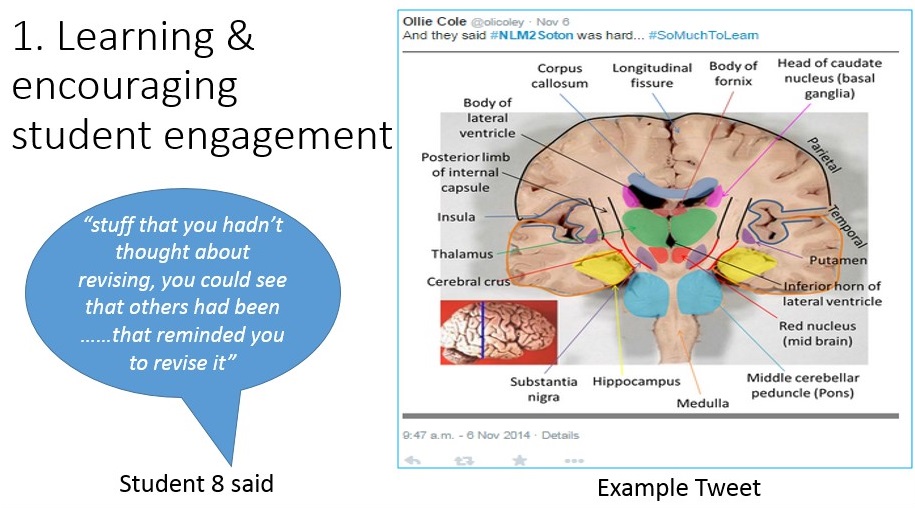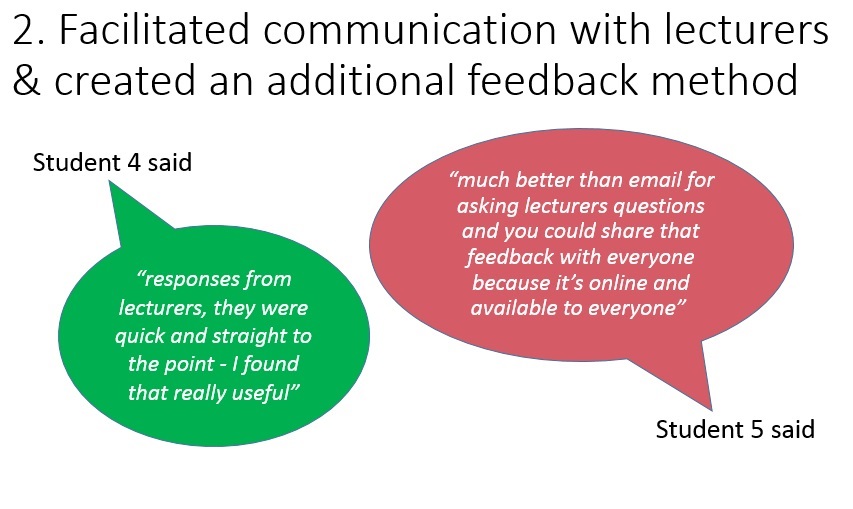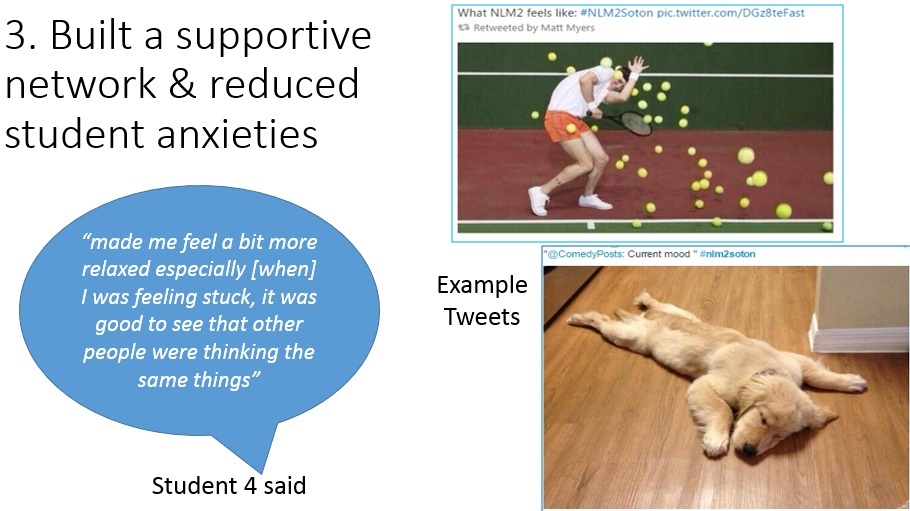


Theme
3AA Mobile learning and social networks
INSTITUTION
Brighton Sussex Medical School
University of Southampton

Neuroanatomy is pre-perceived by medical students as being difficult and contributes to the development of “Neurophobia”1,2 defined as a fear of neural sciences and clinical neurology3. To combat potential disengagement with course material and increased student anxieties we incorporated a Twitter hashtag into the Nervous & Locomotor 2 (NLM2) anatomy course (which covers head, neck and neuroanatomy) at the University of Southampton. We wanted to investigate its effects as a learning support tool since today's "Net" generation of medical students already incorporate social media, such as Facebook4 and YouTube5 into their anatomy learning
Previously reported findings from this study have indicated that frequency of hashtag use had no effect on exam performance. Also common themes of Tweets were identified as follows: Shared learning ideas (33%), Morale boosts (27%), Questions (25%), Worries (11%) and general course information (4%)6, which indicated how the hashtag was being used.
This part of the study investigated whether Twitter could be used to increase student engagement and relieve student anxieties during the NLM2 anatomy course.
The nlm2soton hashtag was created for a cohort of 197 medical students studying NLM2 anatomy. Students completed an end of module questionnaire and a focus group was conducted to deduce how Twitter impacted the learning experience.
150 questionnaires were successfully completed (78% response rate) revealing student opinions on hashtag (see Table 1).
 |
Three main categories were identified from the focus group responses on how the hashtag was valued by students as follows:



The NLM2 hashtag was valued by students for academic learning and for increasing communication methods with teachers. The hashtag allowed students to express their worries and anxieties and receive empathy from their peers which served to increase morale and prevent the onset of neurophobia. Although, the hashtag did not have an impact on exam scores it successfully increased student engagement and enjoyment of the NLM2 anatomy course.
A Twitter hashtag can be used effectively to support students during diffcult and challenging courses in medical education such as neuroanatomy.
- Flanagan E, Walsh C, Tubridy N. Neurophobia – attitudes of medical students and doctors in Ireland to neurological teaching. European Journal of Neurology (2007) 14:1109–1112.
- Zinchuk AV, Flanagan EP, Tubridy NJ, Miller WA, McCullough LD. Attitudes of US medical trainees towards neurology education: "Neurophobia" - a global issue. BioMed Central Medical Education (2010) 10:49.
- Jozefowicz RF. Neurophobia: The fear of neurology among medical students. Archives of Neurology (1994) 51(4):328-329.
- Jaffar AA. Exploring the use of a Facebook page in anatomy education. Anat Sci Ed (2014) 7:199–208.
- Barry DS, Marzouk F, Chulak-Oglu K, Bennett D, Tierney P, O'Keeffe GW. Anatomy Education for the YouTube Generation (2015) In Press.
- Hennessy C, Border S. Using social media as an educational tool: The potential role of Twitter in enhancing the student learning experience in neuro/anatomy. Poster LB12 at Experimental Biology Conference, Boston MA (2015).
 Send Email
Send Email